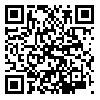BibTeX | RIS | EndNote | Medlars | ProCite | Reference Manager | RefWorks
Send citation to:
URL: http://jrsm.khu.ac.ir/article-1-2297-en.html
The essence of science is to build comprehensives model rather than scattered
data, because the data in form of modeles can be discovered, explained and
interpreted. The lack of reliable models in sport, and in particular, sport for all,
encouraged the researcher to achieve a model for sport for all in Iran.The aim of
the present study is to propose a model to measure and analyze the sport for all
in Iran. For this purpose, a 66 questions questionnaire was used based on model
of sport for all in Iran.The samples were selected among the Iranian sport
administrates using stratified random sampling method. 320 questionnaires were
collected.The Chi-square value of the model, RMSEM and goodness of fit index
(GFI) was 385.76, 0.082 and 0.95, respectively. The adjusted goodness of fit
index (AGFI) for the degrees of freedom was equal to 0.94. These values indicate
a good fitting of the model.
This model is a simplified representation of the sport for all which shows the basic
constructs of sport for all in Iran.The process of sport for all in Iran can be
analyzed by using the present model. It is also possible to find a new classification
in sport for all.
Received: 2016/04/12 | Accepted: 2016/04/12 | Published: 2016/04/12
| Rights and permissions | |
 | This work is licensed under a Creative Commons Attribution-NonCommercial 4.0 International License. |



